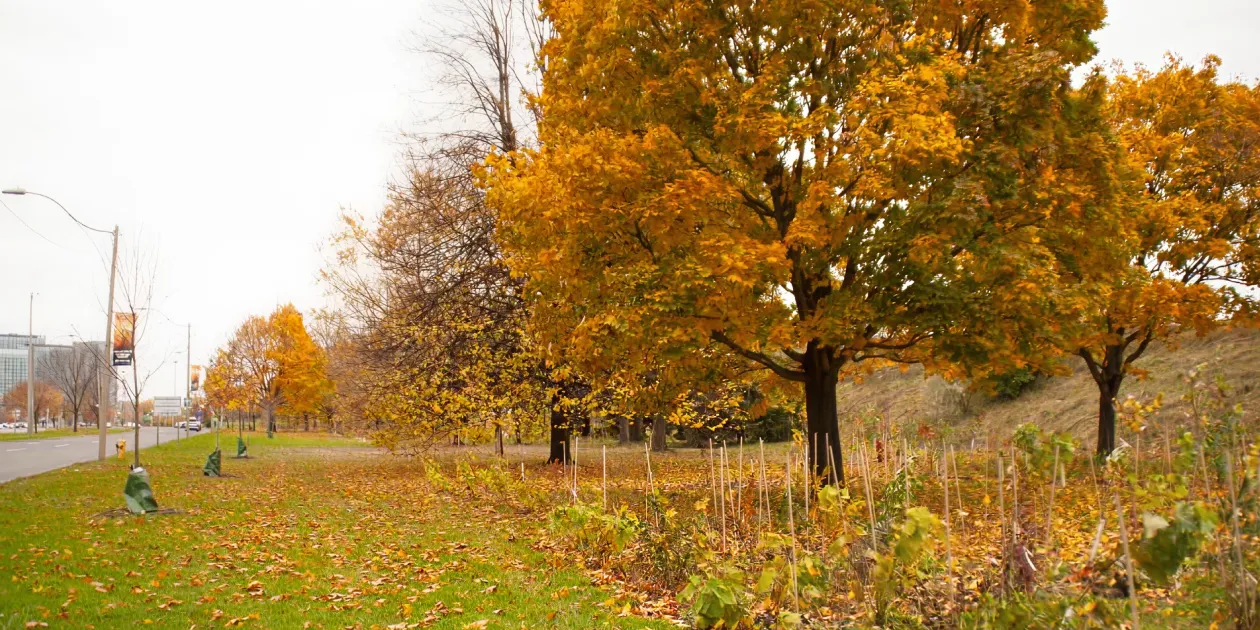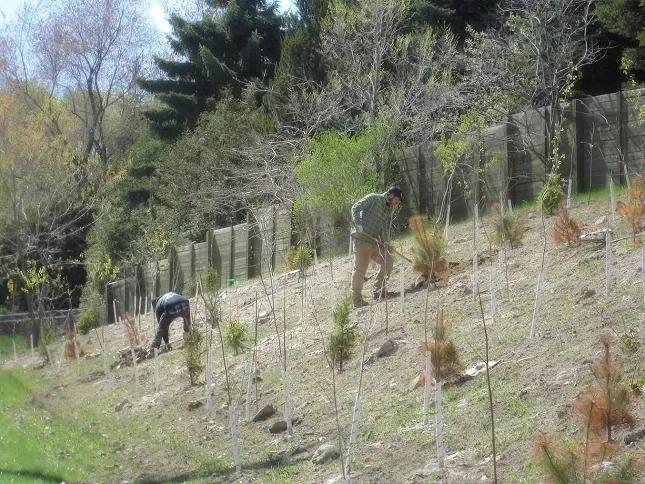Restoring Urban Forests in Toronto
Since 2008, Brinkman has partnered with the City of Toronto to restore natural habitats across Canada’s largest city. Through large-scale urban naturalization, over 40,000 native trees and shrubs are planted each year to improve biodiversity, resilience, and community green space.

Project Details
Location: Toronto, Ontario
Client / Partners: City of Toronto
Project Type: Urban naturalization, riparian restoration, invasive species management
Scale: Ongoing since 2008; averaging 40,000 trees and shrubs planted annually across diverse city sites
Project Overview
The City of Toronto has invested in long-term naturalization to restore habitats and improve ecosystem health within its urban boundaries. Since 2008, Brinkman has successfully delivered the majority of the city’s naturalization planting work, making it one of our longest-standing urban restoration partnerships.
Planting sites span a wide variety of landscapes — from riparian corridors and old landfill sites to freeway medians, park expansions, and community green spaces. Each site is designed and planted with native species to restore ecological function and contribute to Toronto’s broader urban forest strategy.
This work takes place on the traditional territories of many Nations, including the Mississaugas of the Credit, the Anishinaabe, the Chippewa, the Haudenosaunee, and the Wendat peoples, and is now home to many diverse First Nations, Inuit, and Métis peoples.



Impact at a Glance
- 640,000 trees and shrubs, planted since 2008
- Site diversity: riparian zones, dumpsites, freeway medians, parks, and more
- Native species mix: live whips, bare-root, and potted stock in varied sizes
- Comprehensive establishment care: 24 months of maintenance, fertilization, irrigation, pruning, and invasive species control
Urban Ecological Planting and Care
Brinkman’s teams bring best practices in ecosystem management to diverse, high-use environments, beginning with careful site preparation through soil amendment and mulch application. Planting designs apply ecological principles to maximize biodiversity and habitat function, with species installed as whips, bare-root, or potted stock depending on site conditions. After planting, each site receives 24 months of tailored establishment care, including fertilization, irrigation, invasive species removal, staking, pruning, and wildflower seeding, to ensure survival and accelerate ecological resilience.
Outcomes
Over more than a decade of partnership, this program has contributed significantly to Toronto’s expanding urban forest canopy. By naturalizing degraded and underutilized lands, the project supports biodiversity, improves stormwater management, restores riparian health, and enhances access to nature for urban residents.
